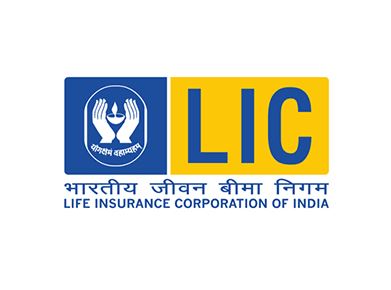Books that provide an overview of insurance offer essential insights into the principles, types, and significance of insurance in mitigating risks. These texts cover various insurance sectors, including health, life, property, and auto, explaining their functions, benefits, and regulatory environments. They also delve into key concepts like underwriting, policy structures, risk management, and claims processes. Such books are valuable resources for students, professionals, and anyone seeking to understand the intricacies of insurance. By exploring real-world examples and case studies, they help readers grasp the practical applications and strategic importance of insurance in today’s world.

Here are top 7 books that talks about Insurance:
1.Principles of Risk Management and Insurance
“Principles of Risk Management and Insurance” by George E. Rejda and Michael McNamara is a comprehensive textbook that delves into the core concepts of risk management and insurance. The book is praised for its clear and thorough explanation of fundamental principles and practices in the field.
Key points include the analysis of risk and its impact on both individuals and businesses, the exploration of various types of insurance products, and the discussion of the role of insurance in financial planning and risk mitigation. Rejda and McNamara provide detailed insights into policy structures, underwriting, and claims processes, making complex topics accessible through real-world examples and case studies.
Reviewers commend the book for its practical approach, comprehensive coverage, and clear writing style. It is widely used in academic settings and is considered an essential resource for students, professionals, and anyone interested in understanding the intricate workings of the insurance industry.
2. Introduction to Risk Management and Insurance
“Introduction to Risk Management and Insurance” by Mark S. Dorfman and David A. Cather offers a balanced and comprehensive introduction to the fields of risk management and insurance. The authors, both renowned experts, present key concepts and practices with a blend of theoretical insights and practical examples.
Key points of the book include a thorough examination of risk identification and assessment, strategies for managing and mitigating risk, and an exploration of various insurance products and their functions. Dorfman and Cather provide detailed discussions on underwriting, policy structures, and claims processes, making the material accessible and relevant to both students and professionals.
Reviewers appreciate the book’s practical approach, clarity, and balanced coverage of both risk management and insurance topics. It is widely used in academic courses and valued for its ability to bridge theory and practice. The inclusion of real-world examples and case studies enhances the reader’s understanding of how risk management and insurance principles are applied in everyday scenarios.
3. The New Insurance Professional: A Plan for the Future
“The New Insurance Professional: A Plan for the Future” by Larry Neilson explores the dynamic and evolving landscape of the insurance industry, emphasizing the skills and knowledge future professionals will need to succeed. Neilson, a seasoned industry expert, provides an in-depth analysis of emerging trends, technological advancements, and regulatory changes reshaping the sector.
Key points include the importance of digital transformation, data analytics, and customer-centric approaches in modern insurance practices. Neilson discusses how professionals can adapt to these changes by acquiring new skills, such as proficiency in insurtech, understanding regulatory compliance, and enhancing customer engagement strategies. He also emphasizes the significance of continuous learning and professional development.
Reviewers commend the book for its forward-thinking perspective and practical advice. It is considered an essential read for current and aspiring insurance professionals who want to stay ahead in a rapidly changing industry. The book’s actionable insights and real-world examples make it a valuable resource for navigating the future of insurance.
4. Insurance and Risk Management for Small Business
“Insurance and Risk Management for Small Business” by Robert L. Brown provides essential guidance tailored specifically for small business owners seeking to protect and sustain their enterprises.
Key points include a detailed exploration of various insurance options suited for small businesses. Such as liability, property, and workers’ compensation insurance. Brown emphasizes the importance of risk assessment and management practices. This helping business owners identify potential threats and implement effective mitigation strategies. The book also covers regulatory compliance and the financial implications of different insurance policies.
Reviewers praise the book for its clear, actionable insights and its focus on real-world applications. It is providing practical tools and knowledge to effectively navigate the complexities of insurance and risk management.
5. Handbook of International Insurance: Between Global Dynamics and Local Contingencies
“Handbook of International Insurance: Between Global Dynamics and Local Contingencies,” edited by J. David Cummins and Bertrand Venard, offers an in-depth examination of the global insurance industry, blending insights into international trends with a focus on local practices. Cummins and Venard, both respected experts in the field, curate contributions from leading scholars and practitioners to provide a comprehensive overview.
Key points include an exploration of global insurance market dynamics, including regulatory variations, market structures, and emerging trends such as insurtech and sustainability. The handbook also delves into the impact of local practices on global strategies, highlighting how regional differences influence insurance operations and policy development.
Reviewers highlight the book’s thorough analysis and extensive coverage, praising it for bridging the gap between global perspectives and local realities. It is highly regarded as an essential resource for professionals, academics, and policymakers seeking a nuanced understanding of international insurance markets.
6. Risk Management and Insurance
“Risk Management and Insurance” by Scott E. Harrington and Gregory R. Niehaus offers a comprehensive introduction to risk management alongside an in-depth exploration of the insurance industry. Harrington and Niehaus, both esteemed academics in the field, provide a detailed analysis that integrates foundational concepts with practical industry insights.
Key points include a thorough examination of risk assessment and management strategies, as well as a detailed overview of various types of insurance products and their applications. The book covers essential topics such as policy design, underwriting processes, and claims management. Harrington and Niehaus also discuss contemporary issues affecting the industry, including regulatory changes and emerging trends like digital transformation.
Reviewers commend the book for its clear, engaging writing style and its balanced approach to theory and practice. It is praised for being an invaluable resource for students, professionals, and anyone seeking a solid understanding of risk management and insurance fundamentals.
7. The Economics of Insurance
“The Economics of Insurance” by K.H. Borch provides a rigorous analysis of the economic principles that underpin the insurance industry. Borch, a renowned economist in the field, offers a theoretical framework for understanding the complexities of insurance markets and institutions.
Key points include a detailed exploration of risk pooling, pricing mechanisms, and the role of insurance in managing economic uncertainties. Borch examines the economic theories related to insurance demand, supply, and market equilibrium, providing insights into how these principles influence the behavior of insurers and policyholders. The book also delves into topics such as moral hazard, adverse selection, and regulatory impacts on insurance markets.
Reviewers praise the book for its scholarly depth and clarity in presenting complex economic concepts. It is highly valued by academics, researchers, and professionals for its thorough theoretical analysis and its contribution to understanding the economic dynamics of insurance.
Conclusion
Books offering an overview of insurance provide essential insights into the principles, practices, and economic dynamics of the industry. They cover fundamental concepts such as risk management, insurance products, policy structures, and market trends. Through clear explanations and practical examples, they bridge the gap between theoretical knowledge and real-world applications. By exploring both global and local perspectives, these books equip readers with a comprehensive understanding of insurance and its impact on financial stability and security.
Read More:
- Bike Insurance: Premium Details And How To Buy
- How safe private insurance companies are?
- 7 principles of Insurance which every investor should know
- Why should you avail life insurance?

Hello, I am Tanisha Kriplani, graduated in computer science from Delhi University. I am passionate about web content writing and have a strong interest in Data Analytics and Data Engineering.












